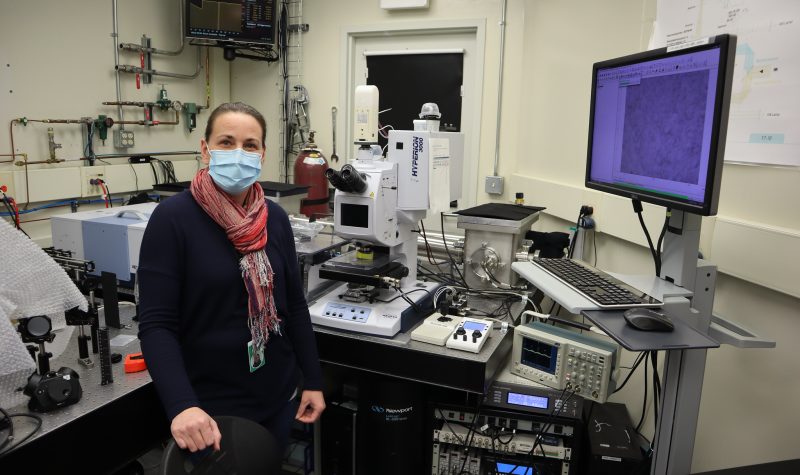The “wear and tear” of aging is often noticed first in our bodies, but our brains also experience changes that make it harder to remember where you left your keys or the name of that acquaintance you ran into at the grocery store.
Dr. Kendra Furber, Assistant Professor, UBC Northern Medical Program and the Division of Medical Sciences at UNBC, is working to pinpoint the causes of brain aging and how we can prevent or reverse the damage of time. Myelin degradation is one of the contributing factors to these lapses in memory and cognition. This fatty substance covers the neurons in your brain and spinal cord, helping to insulate the connections between cells and allowing lightning-fast information flow through the nervous system.
“Our brains continue to myelinate until midlife and then the volume and integrity of that myelin starts to decline. This often correlates with deficits in memory and cognitive processing speed,” Furber said.
Furber and her team have been using the Mid-IR beamline at the Canadian Light Source (CLS), the University of Saskatchewan, to look at biochemical changes in the brain. The CLS is a national research facility, producing the brightest light in Canada—millions of times brighter than even the sun. It annually hosts more than 1,000 scientists from around the world who use the facility’s light to conduct ground-breaking health, agricultural, environmental and advanced materials research. The Mid-IR beamline is ideal for studying biomedical and biological materials, as well as other types of samples.
The Mid-IR beamline at the CLS allows Furber and her team to push the boundaries of their research, helping them to see results in greater detail and to learn more about how changes in the brain impact myelin formation and degeneration.


